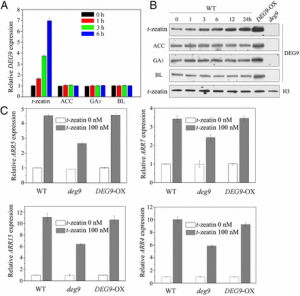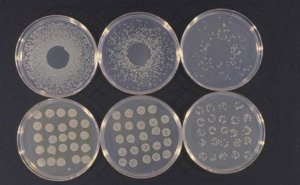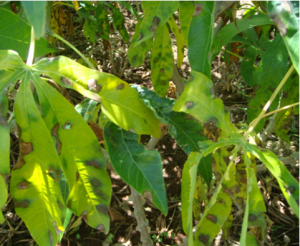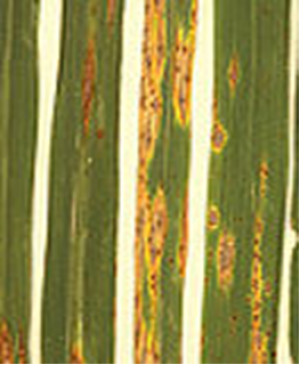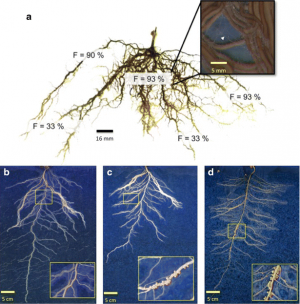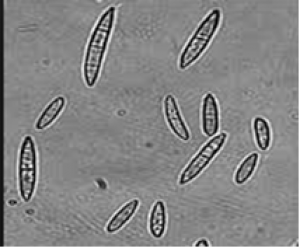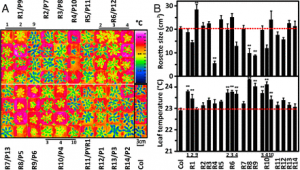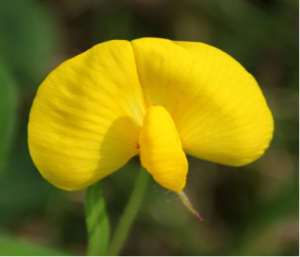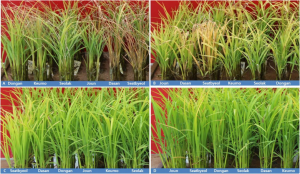Selective protein proteolysis is essential for many plant signal transduction pathways and regulates developmental stages of a plant. In addition to the well-characterized ubiquitin-proteasome system, other factors appear to be involved in the degradation of plant signaling components. Here we describe the function of the serine protease degradation of periplasmic protein 9 (DEG9) in plant signaling.
Pseudomonas syringae is a Gram-negative bacterium that uses a type III secretion system to inject type III effector (T3E) proteins into the host to cause disease in plants. Multiple P. syringae T3Es promote virulence by targeting immune system signaling pathways using diverse biochemical mechanisms. We provide evidence for a molecular function of the P. syringae T3E HopAF1. We demonstrate that the C-terminal region of HopAF1 has structural homology to deamidases. We demonstrate that an enzyme important for production of the gaseous signaling hormone ethylene is a target for HopAF1 and show that HopAF1 targets methylthioadenosine nucleosidase proteins MTN1 and MTN2 to dampen ethylene production during bacterial infection.
Cassava anthracnose disease (CAD), caused by the fungus Colletotrichum gloeosporioides f. sp. Manihotis, is a serious disease of cassava (Manihot esculenta) worldwide. In this study, we established a cassava oligonucleotide-DNA microarray representing 59,079 probes corresponding to approximately 30,000 genes based on original expressed sequence tags and RNA-seq information from cassava
Out of 482 endophytic actinomycetes isolated from rice blast infected and healthy rice, Streptomyces endus OsiSh-2, exhibited a remarkable in vitro antagonistic activity. Scanning electron microscopy observation of M.oryzae treated by OsiSh-2 revealed significant morphological alterations in hyphae. In two-year's field tests, spraying OsiSh-2 spore solution (107 spores mL-1 ) is capable of reducing rice blast disease severity by 59.64%.
In order to maintain high yields while saving water and preserving non-renewable resources and thus limiting the use of chemical fertilizer, it is crucial to select plants with more efficient root systems. This could be achieved through an optimization of both root architecture and root uptake ability and/or through the improvement of positive plant interactions with microorganisms in the rhizosphere.
Gene disruption by homologous recombination is widely used to investigate and analyze the function of genes in Fusarium fujikuroi, a fungus that causes bakanae disease and root rot symptoms in rice. To generate gene deletion constructs, the use of conventional cloning methods, which rely on restriction enzymes and ligases, has had limited success due to a lack of unique restriction enzyme sites.
Water is the major limiting factor for plant productivity in the field, and current water use in agriculture is not sustainable. Under water limitations, plants can ameliorate the carbon for water exchange leading to higher water use efficiencies. The plant hormone abscisic acid is activated in response to drought and regulates the water status and acclimation responses.
We present a draft genome of the peanut A-genome progenitor, Arachis duranensis, providing details on total genes present in the genome. Genome analysis suggests that the peanut lineage was affected by at least three polyploidizations since the origin of eudicots. Resequencing of synthetic Arachis tetraploids reveals extensive gene conversion since their formation by human hands.
Low temperature stress at the seedling stage of rice is an important factor causing the leaf discoloration, wilting and consequently leads to non-uniform crop maturation. In order to screen the cold tolerance elite lines efficiently, the five cold treatment conditions with different water and air temperature were designed and treated at seedling stage. For the evaluation of seedling tolerance, the injury was scored by visual rate and measured by Soil and Plant Analyzer Development (SPAD) meter.
Angular leaf spot caused by Xanthomonas fragariae is the only major bacterial disease of cultivated strawberry (Fragaria ×ananassa). While this disease may cause reductions of up to 8 % of marketable yield in Florida winter annual production, no resistant cultivars have been commercialized. Wild accessions US4808 and US4809 were previously identified as resistant to the four genetic clades of X. fragariae, and introgression of the trait into commercial quality perennial-type germplasm was initiated


 Curently online :
Curently online :
 Total visitors :
Total visitors :
